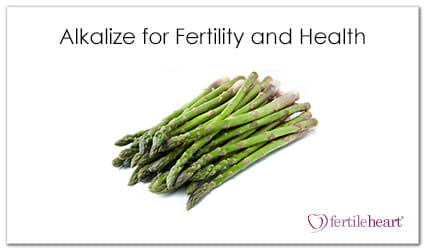The following excerpt is reprinted with permission from Alternative Medicine magazine, September 2000/#37. For subscription information call 800-333-HEAL (4325).
While a great number of women in our culture develop some kind of sexual reproductive organ dysfunction, most are misled about true sexual and reproductive health and what options exist to achieve it. People tend to think of women’s “hormone problems” as starting in midlife with the onset of menopause. In fact, a dysfunctional pattern can begin during adolescent years or even before birth. The severity of hormonal problems may increase with age, but it is not aging per se that is the root of declining health. It is most often the cumulative physiological effects of stress that cause disruption of the natural rhythms and balancing mechanisms of women’s hormones, thereby eventually compromising overall health as well as sexual and reproductive health.
Allopathic (conventional) medical thinking fails to look for or treat the root causes of women’s hormonal imbalances. For example, more young women today are experiencing infertility because they are not ovulating, yet they are being given fertility drugs like Clomid without a comprehensive, functional hormonal evaluation. Though these women often succeed in conceiving, they generally end up paying a price for short-sighted symptom management. The future health consequence is that other symptoms will appear and hormonal imbalance will progress.
Similarly, women are led to believe that it is normal to experience distressing menopausal symptoms. They anticipate having to accept the conventional treatment choice of hormone replacement therapy (HRT) with synthetic hormones. Women are encouraged to do this in spite of the fact that estrogen supplementation places them at risk for breast cancer and other serious health problems. HRT and fertility drugs—as well as birth control pills and other hormonal therapies—were all designed to treat only specific symptoms with no regard for the effects they have on the entire body. Because of this non-holistic approach, we are seeing an increase in the incidence of not only breast cancer and sexual reproductive organ dysfunctions but also uterine and ovarian cancer.
Another problem with conventional HRT is that it generally employs the wrong forms of estrogen and progesterone. Synthetic estrogens or the estrogens that are excreted in pregnant mare urine are often used. And of the three estrogen hormones (estradiol, estriol and estrone) found in women’s bodies, most conventional pharmaceutical products use only estradiol. Many HRT formulas also contain synthetic progestin (as opposed to natural progesterone), which is included to help balance the effects of synthetic estrogen. Yet an artificial hormone cannot function in concert with another artificial hormone to create balance in the body. Worse, these HRT formulas ignore the increasingly common wisdom that it is progesterone deficiency—not estrogen deficiency—that leads to early or difficult menopause and many other health problems affecting women.
A lot of women are discovering that conventional HRT does not give them the overall health and well-being they had hoped for and they are seeking out healthier alternatives. What everyone will hopefully soon realize is that menopausal and sexual reproductive problems are actually symptoms of overall hormonal imbalances. Women need to get a complete picture of their hormonal status and find appropriate therapeutic steps to maintaining balance.
Meanwhile, millions of women continue to experience dysfunctions such as PMS, depression, decreased libido, fibrocystic breasts, food and sugar cravings, uterine fibroids, irregular or excessive uterine bleeding and endometriosis. Those whose dysfunctions are extremely pail or debilitating are told that their “health is more important than their reproductive organs” and that “a hysterectomy would be the best thing.” Unbelievably, an estimated trillion-plus dollars was spent during the twentieth century to remove women’s reproductive organs. Hysterectomy now outnumbers almost all types of surgery performed in the U.S.
Reproductive organs play an important role in more than reproduction. Many studies show that each aspect of the female sexual anatomy serves an integral part in the health and well-being of the entire body. Each function is part of the whole, part of a system, or symphony, of interrelated parts and timing.
The endocrine interplay
What needs to be understood is that, for example, if a woman’s thyroid or adrenal glands are depleted or functioning inadequately—a fairly common occurrence in our stressful culture—she will likely experience problems with her sexual reproductive organs. The connection between these organs and the thyroid, the adrenals and other endocrine glands is that they are all governed by endocrine hormones. This is an important interrelationship, which is why what disrupts one gland can disrupt another, causing a kind of domino effect or vicious cycle. The immune system and the thymus are involved, too, because immune response is inhibited by abnormal hormone levels.
The endocrine system is responsible for homeostasis, the body’s ability to maintain stable internal conditions, including body temperature, regardless of changing external conditions. Balance is crucial to all life processes. The body functions within very specific margins, and being forced to function outside of those margins can cause a whole series of negative events, even death. The endocrine system also controls the processes of reproduction, metabolism, growth and development.
One of the biggest reasons why hormonal imbalances are misunderstood is because “modern” medicine disregards the way the human body deals with its environment. Consider that the body’s responses basically have not changed for 50,000 years. We still respond to our environment with the most primal of mechanisms: the “fight-or-flight” mechanism, the release of adrenaline and other stress hormones. The stress response, initiated in the hypothalamus and pituitary, and regulated by the adrenal glands, is responsible for redirecting energy and resources away from the reproductive organs when we are under severe or chronic stress, directing it instead to the muscles and organs that are necessary for survival.
This redirection is allowed to take place because, on the body’s list of priorities, survival comes first and reproduction comes last. The reproductive system is the only body system whose functions are biologically expendable. With this in mind, we see how the ability to reproduce becomes a privilege in the body, not a right. Fertility or the ability to ovulate, is therefore a good indicator of the overall health of a woman.
The fight-or-flight response can be a detriment as well as a lifesaving response. In a modern environment, many things—ranging from allergic reactions to being cut off while driving—can evoke this mechanism. Throughout daily life, there are many hidden as well as overt sources of stress. Most of the time, our response to stress ends without a literal “fight” or some form of physical activity, as our ancestors would have engaged in. One of the problems with this is that adrenaline, unlike most hormones, has no enzyme “switch” to turn it off. Once released it must be used or it remains active. As a result, we remain in a state of hyper-stimulation, with abnormal levels of adrenaline and cortisol, the primary fight-or-flight hormones. Other hormone levels, such as the pancreatic hormone glucagon, also become dysregulated. If hyper-stimulation persists, we have difficulty inducing a relaxation response, and we do not return to a normal state.
Over a period of time, if chronic stress continues, the body adapts to adrenal hyper-stimulation, continuing in a perpetual fight-or-flight mode. This is called maladaptation, a process in which endocrine system organs begin to break down. This process eventually reaches the point where the adrenals become exhausted and cortisol levels drop. One example of what can result from adrenal exhaustion is fibromyalgia, a condition that can arise when the protective benefits of normal cortisol levels are lost.
The adrenals are usually first in the order of endocrine function breakdown, followed by the insulin-producing portion of the pancreas, thyroid, ovaries, parathyroid, pineal, pituitary and finally, the link to the autonomic nervous system, the hypothalamus. The thymus gland, which produces immune defense cells, is also affected in the endocrine breakdown process. Each of these glands controls specific functions, and as each breaks down, new symptoms appear. Symptoms are subtle at first. Then over the years, as the body goes further into deficit, the symptoms will increase and worsen.
The more stress endured, the worse the hormonal problems become. When the endocrine system is severely dysregulated, the hypothalanius is affected. If the production of corticotrophin-releasing hormone (CRH) becomes severely affected, the psychological symptoms can become debilitating. Because CRH controls fear through stimulating adrenal secretion, an abnormal level of CRH can make it difficult to perform routine chores or leave the house. The fear response in turn worsens hormonal problems by further stressing the adrenals, which respond by converting more sex hormones to stress hormones and becoming more maladapted—a vicious cycle.
The creation of maladaptation
A woman’s hormonal problems can begin even before birth, during her fetal development. If her mother is under chronic stress and adrenally hyper-stimulated, the mother’s body will draw on the developing fetus’s “survival chemistry” to supplement her own body’s hormonal needs. During the second trimester the placenta produces on average about 450 milligrams of progesterone a day, and some of this progesterone will be routed to the stressed mother and converted for stress purposes. In the third trimester the developing baby’s adrenal glands begin to produce stress hormones, and these can also be taken and used by the mother.
Women are rarely cautioned about this kind of fetal stress before or during their pregnancies. Nor are they told how the developing baby’s adrenal glands will enlarge to meet the mother’s demand for additional stress hormones.
A baby born in this state of secondary hyper-stimulation produces too much stress hormone. While the baby’s adrenal glands can eventually decrease their output, the glands will tend to reinflate more easily—like a balloon—every time extreme demands are made upon them.
If severe or chronic stress persists, however, hyper-stimulation continues. As the baby grows and matures into an adult, this maladaptive cycle will be perpetuated, causing her sex hormones to be routed from her reproductive system and used for her own stress purposes.
Breaking the stress cycle
Once a maladaptive stress cycle has been established, it will continue until appropriate intervention takes place to restore hormonal balance. This can be done at any age, and functional hormonal testing is the first step. The best type of stress and sex hormone testing is known as a circadian test, which is performed over a 24-hour period.
Sampling is easily accomplished at home, and the test results will determine the exact levels of accumulated stress and sex hormones. Using a collection kit, a woman can obtain a saliva sample every four hours for 24 hours by chewing on a salivette (a small dacron roll). The results will show specific hormonal changes that occur every four hours, demonstrating a 24-hour graphic representation of the body’s stress reactions.
Salivary testing is the best test method because saliva contains free fractions of stress and sex hormones. Free fractions are the utilizable hormones, those that the body actually has access to. Many studies have been conducted showing the validity of assaying these steroid hormones in saliva. The usual hormone tests, conducted with blood samples, measure total hormone production, a value that includes bound (not free) hormones that are unavailable for the body’s use. It is important to measure free fractions to get an accurate picture of how sex and stress hormone levels are varying by body function and activity.
Again, it is important to look at all aspects of the reproductive system and its interplay with the endocrine system, especially adrenal health. It is equally important that women become observant and vigilant about what is happening in their own bodies. This is what it takes to maintain optimum sexual and overall health and maximize longevity.
Steps to restore hormonal health:
- First, support the endocrine system and allow it time to repair.
- Support immune function, thereby reducing stress on the endocrine system.
- Make dietary and nutritional changes according to genetic predisposition, allergies, personal weight and exercise objectives.
- Support proper digestive function; eliminate any malabsorption problems.
- Get exercise, establishing your level of capacity and personal training objectives.
- To relieve stress, try meditation, hypnotherapy, visualization, Hatha Yoga, Tai Chi or QiGong.
- Consider individual counseling and group stress management workshops
- Relax by walking in nature, swimming, pursuing creative activities, changing routines.
I. Michael Borkin, N.M.D., is CEO/Director of The Foundation for The Advancement of Endocrine Research. He is past president of the California State Naturopathic Medical Association.








